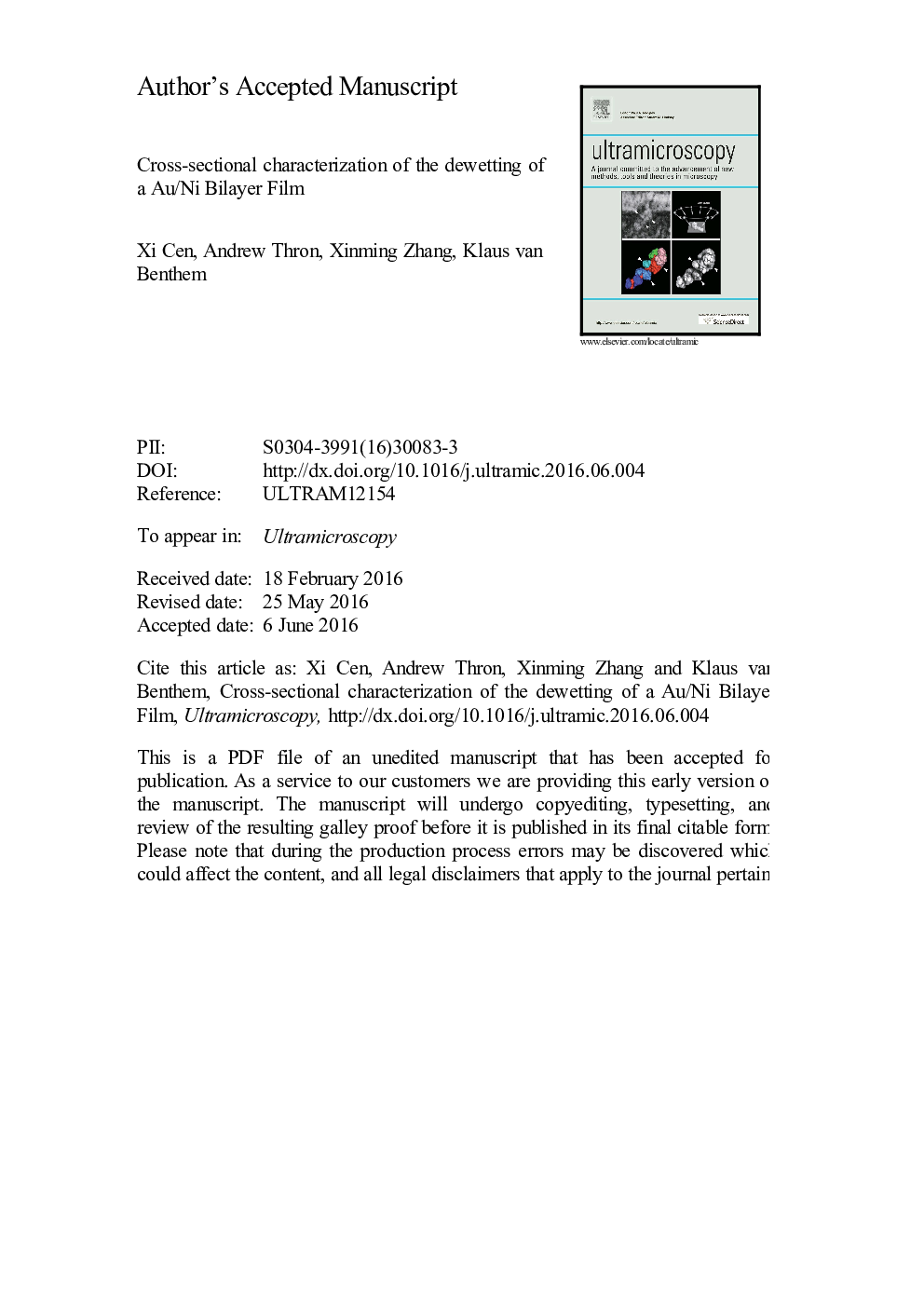| Article ID | Journal | Published Year | Pages | File Type |
|---|---|---|---|---|
| 5466850 | Ultramicroscopy | 2017 | 34 Pages |
Abstract
The solid state dewetting of Au/Ni bilayer films was investigated by cross-sectional transmission electron microscopy techniques, including energy-dispersive X-ray spectroscopy, electron energy-loss spectroscopy and precession electron diffraction. After annealing under high vacuum conditions the early stage of film agglomeration revealed significant changes in film morphology and chemical distribution. Both Au and Ni showed texturing. Despite the initial deposition sequence of the as-deposited Au/Ni/SiO2/Si interface structure, the majority of the metal/SiO2 interface was Au/SiO2 after annealing at 675 °C for 1 h. Void nucleation was predominantly observed at Au/Ni/SiO2 triple junctions, rather than grain boundary grooving at free surface of the metal film. Detailed cross-sectional characterization reveals that the Au/Ni interface in addition to small amounts of metal alloying strongly affects film break-up and agglomeration kinetics. The formation of Au/SiO2 interface sections is found to be energetically preferred over Ni/SiO2 due to compressive stress in the as-deposited Ni layer. Void nucleation is observed at the film/substrate interface, while the formation of voids at Ni/Au phase boundaries inside the metal film is caused by the Kirkendall effect.
Keywords
Related Topics
Physical Sciences and Engineering
Materials Science
Nanotechnology
Authors
Xi Cen, Andrew M. Thron, Xinming Zhang, Klaus van Benthem,
